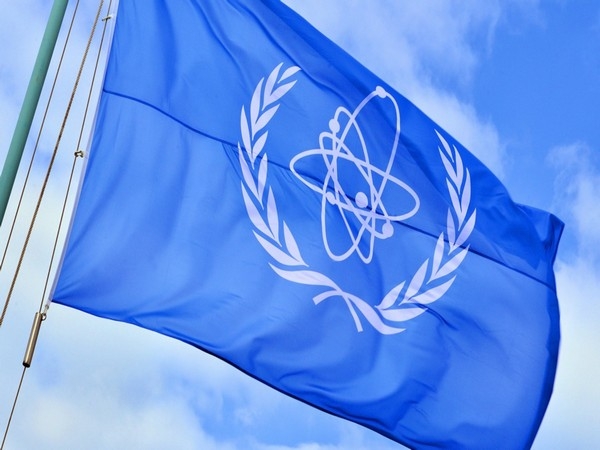Turn the Indus Valley clock by 2,500 years. Now what does that mean

Certain histories can be intimidating. Fascinating, but intimidating. And these aren't the histories of rulers, opulent palaces, of conquests and conquerors - but those of ordinary people like us, who had regular jobs, ate regular meals, and died without much fanfare. The Indus Valley civilisation (widely known as Harappan civilisation) is one such history that not just intimidates, but downright embarrasses large swathes of the contemporary world.
That they had better drainage than the best developed nations of the world today doesn't help. That they lived in the same 'developing' regions that we now identify as parts of north India and Pakistan doesn't help either. But the most rattling aspect of their existence was that they were born and died thousands of years ago. Eight millennia ago to be exact, going by latest data.
The people of the Indus Valley, till recently, were believed to have lived around 3,500 BC. But fresh findings by researchers from different parts of India - IIT Kharagpur, Institute of Archaeology, Deccan College Pune, Physical Research Laboratory as well as the Archaeological Survey of India (ASI) - moves this date back by a whopping 2,500 years. That's 8,000 years before today, which puts the civilisation somewhere in the 6,000 BC range.
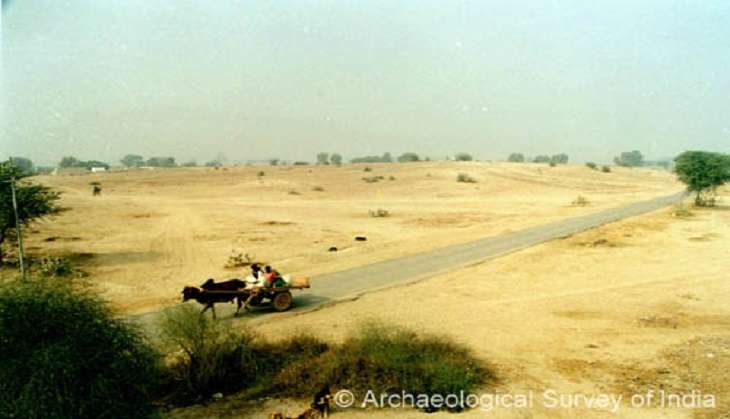
And that must have a multitude of implications we cannot even imagine. But some obvious ones like the change in comparative history, with regard to ancient civilisations such as Egypt and Mesopotamia, a better understanding of how such a rich culture ceases to exist, and the points at which the Indus Valley civilisation intersects with Indian mythology can be explored.
It is also very telling that the Indus Valley predates all modern notions of development, even kingdomhood for that matter, what with nationhood being at the centre of it all; and yet, stands out as a phenomenally peaceful and 'civilised' culture. Our reading of the Indus Valley could potentially change all our notions of how a state must conquer, enforce laws, and essentially make violence the centre of growth.
But before we get into that, this is the exciting new news that makes all of these theories plausible.
Far older than we thought
With the help of a new technique called Optically Stimulated Luminescence (OSL), they dated the Harappan pottery at around 4,000 BC, while the levels from the pre-Harappan Hakra period had pottery that was around 8,000 years old.
The findings, that were published in the Nature Scientific journal on 25 May, come from an excavated site at Bhirrana in Haryana that has preserved evidence from different phases of the Harappan existence. It has stored material right from the pre-Harappan Hakra civilisation to the early mature Harappan and finally the mature Harappan phase.
Bhirrana is one among the cluster of settlements along the now dry river Saraswati that is often considered to be a myth.
"That the Bhirrana and probably several of the Indian Indus valley sites are much older than 5700 years has been guessed by many archaeologists for quite some time. Our study pushes back the antiquity to as old as eighth millennium before present and will have major implications to the evolution of human settlements in Indian sub-continent" says lead investigator Prof Anindya Sarkar who teaches at the of Department of Geology and Geophysics in IIT Kharagpur.
"The Bhirrana yielded large quantities of animal remains like bones, teeth, horn cores of cow, goat, deer, antelope etc. and has been very useful to decipher the climatic condition in which this civilization flourished," says co-investigator Dr Arati Deshpande Mukherjee, Assistant Professor at Deccan College.
This finding is almost as important as the shifted date. Because one of the greatest mysteries about the Harappan civilisation (other than it's undecipherable script) is how it perished.

For a civilisation that was almost impossibly self-sufficient - with a wide trade network, agriculture and even a certain degree of literacy - historical explanations about climatic change putting a sudden end to it seem almost implausible. And that's where the animal remains come in.
"We analysed the oxygen isotope composition in the bone and tooth phosphates of these remains to unravel the climate pattern. The oxygen isotope in mammal bones and teeth preserve the signature of ancient meteoric water and in turn the intensity of monsoonal rainfall," said Prof Sarkar.
"Our study shows that that the pre-Harappan humans started inhabiting this area along the Ghaggar-Hakra rivers in a climate that was favourable for human settlement and agriculture. The monsoon was much stronger from 9000 years to 7000 years before present and probably fed these rivers making them mightier with vast floodplains," he added.
Nine thousand years before present puts us somewhere in 7,000 BC. So between 7,000 and 5,000 BC [a time when we now know the Indus Valley housed people], our rivers were far more powerful than now. After 5,000 BC, monsoons become weaker, the study suggests.
But the Indus Valley continued to thrive. They adjusted to the declining monsoon. "It is very interesting to investigate how these ancient people coped with the then climate change and can be a lesson for today's impending disaster of climate change," said Dr Navin Juyal of Physical Research Laboratory, Ahmedabad who dated the potteries and co-authored the paper.
Coping mechanisms don't always work
The Harappan people had spirit. To adjust to their new, unfavourable climate, they shifted their crop patterns from "large-grained cereals like wheat and barley during the early part of intensified monsoon to drought-resistant species of small millets and rice in the later part of declining monsoon".
This, of course, meant a complete shift in their subsistence strategy. Now, the problem was that the smaller crops had lower yields, which meant that they had no use left for the large Harappan organised storage systems. The study suggests that the Harappans moved to individual household based crop processing and storage system. This "could act as catalyst for the deurbanisation of the Harappan civilization rather than an abrupt collapse," Dr Sarkar proposes.
Changing histories
The Indus Valley civilisation, when seen through a large historical lens of time, falls somewhere in the Bronze Age - between Mesopotamia and Europe. The Harappans, according to high school history texts, roamed our planet around 2,600 BC. This meant that they were a civilisation that was the contemporary to the grand old Mesopotamia.
But if one were to go by the 4,000 BC Harappan pottery found in Bhirrana, there's a possibility that these people of the Indus, who regularly traded with Mesopotamia, may indeed have been an older civilisation. We know about Harappan trade with Mesopotamia thanks to their decipherable texts from 3,000 BC that refer to copper coming from a region called Magan (possibly Oman due to the traces of nickel in them), contact with a place called Dilmun (which texts suggest could be Bahrain,), and Meluhha, a possible name for Harappa.
The Mesopotamian texts mention what they received from Meluhha, a land of sea-farers: carnelian, lapis lazuli, copper, gold, and varieties of wood. Furthermore, Harappan seals, weights, dice and beads have been found in Mesopotamia.

An interesting thing to note here is how far ahead of Mesopotamia the Indus Valley was in terms of development. Especially considering the Valley possibly predates the middle eastern civilisation.
If one were to look at the Harappan city of Mohenjodaro, for instance, it had wider roads, large provisions for drainage, caps where the waste collected, and much better planning. Mesopotamia, on the other hand had almost no sanitation. The street levels rose due to waste being thrown on it and disease must have been common due to low hygiene.
Beyond the Indus Valley and Mesopotamia, the third civilisation that existed in the 'Old World' was that of Egypt. Much like the Indus Valley, the ancient Egyptians too lived along a river - the Nile.
And much like the Harappans, they too experienced flooding and needed to practice controlled irrigation of their valley. But the Egyptian administration was strong and had a powerful military that wanted to conquer.
Inversely, not only have historians not been able to establish any singular authority that ruled Harappa, but there is also no evidence of weapons, let alone an organised military.
How then, did they protect themselves?
It is curious to think that a civilisation that survived thousands of years has thrown up so few weapons. Unless we're willing to count things like fish hooks.
In fact, most research suggests that the Harappans were peaceful. Probably the most peaceful of all ancient civilisations. Even if they had a ruler, there is terracotta evidence to back that he was a 'priest king' with not too much wealth. The Harappan citadel and city walls were not heavily fortified and the few arms they possessed were rudimentary and were better used as tools.
This brings us to the second theory about how Harappa could have met its end. Historians in the past have suggested an invasion. As archeologist SR Rao wrote, "In circa 1900 BC, most of the mature Harappan sites were wiped out forcing the inhabitants to seek new lands for settlement. They seem to have left in a great hurry and in small groups, seeking shelter initially on the eastern flank of the Ghaggar and gradually moving towards the Yamuna. The refugees from Mohen-jo-daro and southern sites in Sind fled to Saurashtra and later occupied the interior of the peninsula."
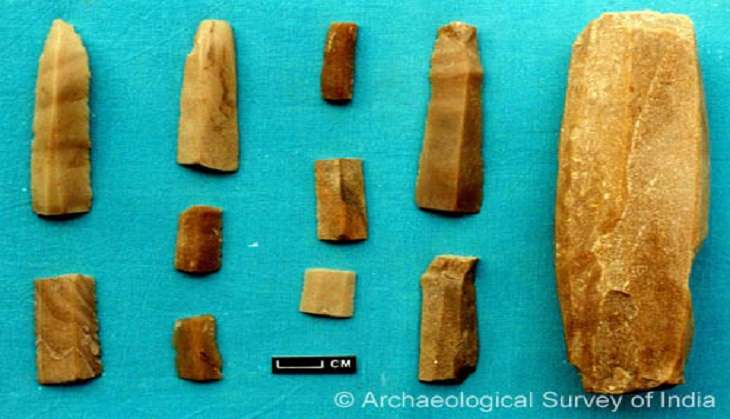
But what were they fleeing from? There's a faction that believes it was invading Aryans. But that is often seen as a myth propagated for the benefit of white supremacy.
While it is compelling to believe this theory to be European colonizers' propaganda, there's evidence in Indian mythology to back this.
Can Indra be blamed?
In 1947, the year of India's independence, REM Wheeler, the then Director-General of ASI, made what would now be called a controversial statement.
While trying to compare physical evidence from Harappa with textual matter from the Rigveda, the earliest Veda, Wheeler wrote:
"The Rigveda mentions pur, meaning rampart, fort or stronghold. Indra, the Aryan war-god is called puramdara, the fort-destroyer.
"Where are - or were - these citadels? It has in the past been supposed that they were mythical ... The recent excavation of Harappa may be thought to have changed the picture. Here we have a highly evolved civilisation of essentially non Aryan type, now known to have employed massive fortifications ... What destroyed this firmly settled civilisation? Climatic, economic or political deterioration may have weakened it, but its ultimate extinction is more likely to have been completed by deliberate and large-scale destruction. It may be no mere chance that at a late period of Mohenjodaro men, women, and children, appear to have been massacred there. On circumstantial evidence, Indra stands accused."
But it probably wasn't all that dramatic
Sure, the Indus Valley wasn't the best prepared for war. But, unlike what Game of Thrones has led us to believe, the world wasn't always full of warring civilisations.
By 1960s, the "massacre in Mohenjodaro" was alread being question by the likes of archeologist George Dales. "Whereas a couple of them [skeletons found at a site] definitely seem to indicate a slaughter, ... the bulk of the bones were found in contexts suggesting burials of the sloppiest and most irreverent nature. There is no destruction level covering the latest period of the city, no sign of extensive burning, no bodies of warriors clad in armour and surrounded by the weapons of war. The citadel, the only fortified part of the city, yielded no evidence of a final defence," writes Dales in The Mythical Massacre at Mohenjodaro, Expediton, 1964.
And further breakdown of these theories eventually resulted in the notion that climate was the major factor in the end of the Valley. A theory, that has now been refuted again.
"One thing is sure that these ancient people in India with no modern technology well managed the disastrous climate change and survived for several thousand years and suggests that we have lot to learn from them. We already have severe droughts and extreme climate events. It will be curious to know how long the modern human with all modern space, communication and agro-bio technology will survive the on-going global climate change," Prof Anindya Sarkar said.
So, would we try and adapt like the Harappans? Or will this climate change actually spell doom for our civilisation?
First published: 5 June 2016, 10:10 IST


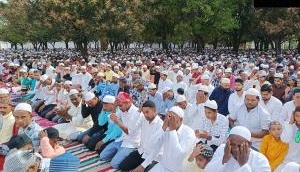
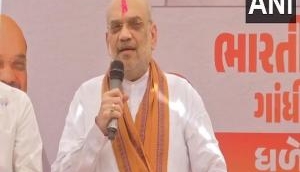

_251049_300x172.jpg)
![BJP's Kapil Mishra recreates Shankar Mahadevan’s ‘Breathless’ song to highlight Delhi pollution [WATCH] BJP's Kapil Mishra recreates Shankar Mahadevan’s ‘Breathless’ song to highlight Delhi pollution [WATCH]](http://images.catchnews.com/upload/2022/11/03/kapil-mishra_240884_300x172.png)

![Anupam Kher shares pictures of his toned body on 67th birthday [MUST SEE] Anupam Kher shares pictures of his toned body on 67th birthday [MUST SEE]](http://images.catchnews.com/upload/2022/03/07/Anupam_kher_231145_300x172.jpg)



